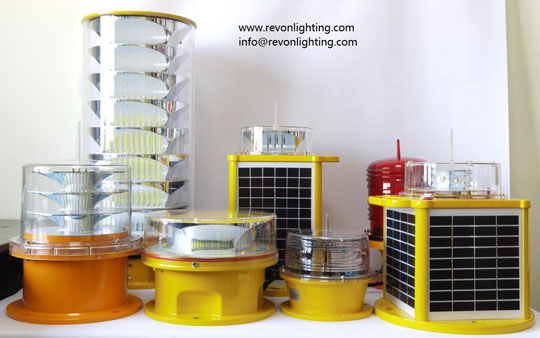Posted: 2024-04-27
Aircraft warning lights, also known as aviation obstruction lights, are essential safety devices designed to indicate the presence of tall structures or potential hazards to aircraft during flight. These lights play a critical role in ensuring aviation safety by enhancing the visibility of obstacles, especially during nighttime or low-visibility conditions.
The primary purpose of aircraft warning lights is to warn pilots of the presence of structures such as towers, cranes, chimneys, bridges, and wind turbines that could pose a risk to safe navigation. They are typically installed on the highest point of these structures to maximize their visibility from a distance. The lights emit a powerful and concentrated beam of light that is easily identifiable by pilots, enabling them to maintain a safe distance and navigate their aircraft accordingly.
Aircraft warning lights are required to comply with international aviation regulations, including those set by the International Civil Aviation Organization (ICAO) and local aviation authorities such as the Federal Aviation Administration (FAA) in the United States. These regulations outline the specific requirements for the characteristics, installation height, and operation of these lights to ensure consistent standards of safety worldwide.

There are different types of aircraft warning lights available, including high-intensity white lights, red lights, and xenon strobe lights. High-intensity white lights are commonly used for structures exceeding a certain height and are visible from long distances. Red lights are typically used for medium-sized structures, while xenon strobe lights are often employed for temporary structures or areas with high electromagnetic interference.
| Aircraft warning lights | Aircraft warning light |
In addition to their primary function of warning pilots, aircraft warning lights also serve as a visual reference for aviation authorities and ground personnel. These lights help in identifying the location and height of structures during inspections and maintenance activities. Regular maintenance and inspections of these lights are crucial to ensure their proper functioning and compliance with regulations. It is essential to check for any damage, verify alignment and visibility, and promptly replace any faulty components.
Advancements in technology have led to the development of LED (Light-Emitting Diode) lights for aviation warning purposes. LED lights offer several advantages over traditional lighting technologies, including energy efficiency, long lifespan, and improved durability. They consume less energy, resulting in reduced operational costs, and can operate for thousands of hours before requiring replacement. LED lights also provide better performance in terms of brightness and visibility while being resistant to vibrations and extreme weather conditions.
In conclusion, aircraft warning lights play a vital role in aviation safety by warning pilots of potential obstacles and hazards during flight. Compliant with international aviation regulations, these lights enhance visibility, especially during nighttime or low-visibility conditions. With advances in technology, LED lights have become the preferred choice, offering energy efficiency and long-lasting performance. Regular maintenance and inspections are essential to ensure the proper functioning of these lights and to maintain the overall safety of air traffic.